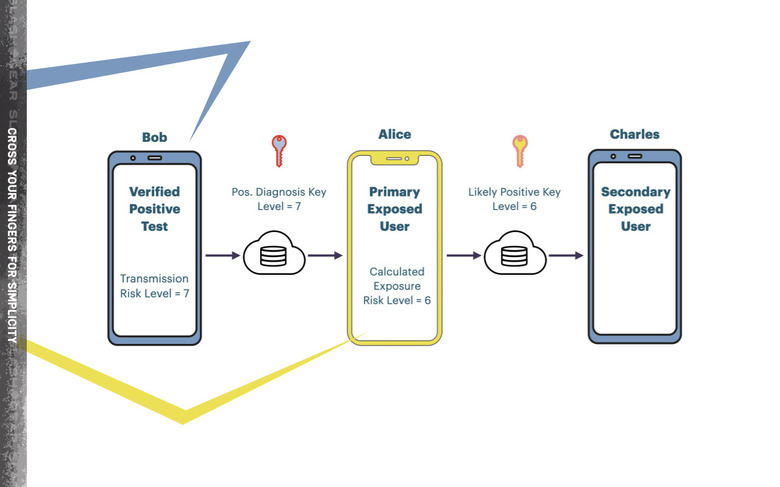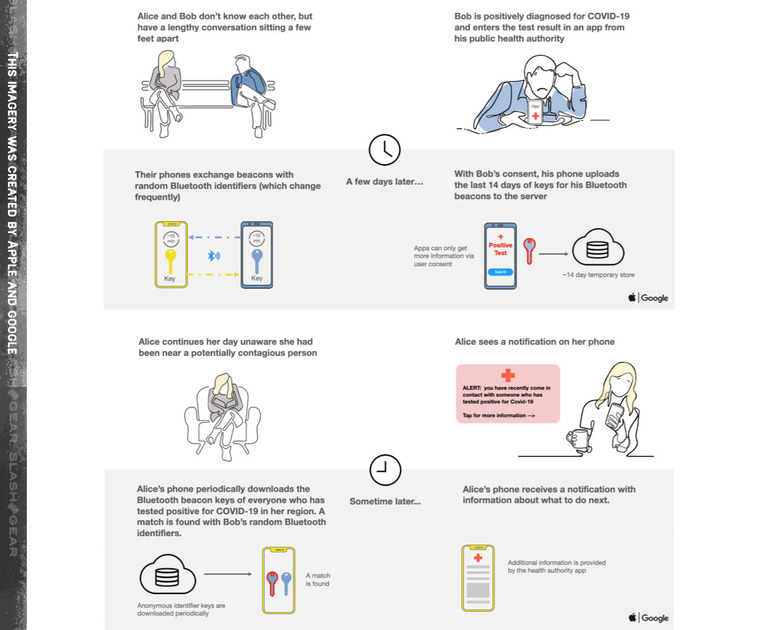How You'll Turn On Coronavirus Contact Tracing With Your iPhone
Apple and Google revealed plans to implement Contact Tracing on the iPhone and Android devices of all sorts this week. The plan starts with Google and Apple creating the code that'll allow smartphones to anonymously "ping" one-another and keep a record of said pings. If one person tests positive for COVID-19, notifications will be sent to all devices that've been near the infected person in the recent past.
According to the latest release from Google and Apple, their proposal for a first phase of contact tracing for iPhone and Android devices will work with 3rd-party developer-created apps that'll work with local Public Health Authorities to enact contact tracing in communities around the world. The second phase will ideally be integrated into Android and iOS settings – right at the base.
Per the release from Google and Apple, "In the second phase, available in the coming months, this capability will be introduced at the operating system level to help ensure broad adoption, which is vital to the success of contact tracing. After the operating system update is installed and the user has opted in, the system will send out and listen for the Bluetooth beacons as in the first phase, but without requiring an app to be installed."
How will I be tracked by my iPhone?
Contact Tracing is not the same sort of tracking you'd use if you're sending a friend updates on your GPS location on a map. Instead, Google and Apple's plans are to use Bluetooth and a randomly-assigned ID code for each individual smartphone. As a smartphone detects other smartphones near it via Bluetooth, IDs will be exchanged.

If one smartphone owner tests positive for COVID-19, they'll be able to report to the app that they've tested positive for COVID-19. Upon reporting a COVID-19 infection from one phone, all other phones that've come near that phone in the recent past will be notified.
Every 14 days, the randomly-assigned ID in a Contact Tracing app will be re-randomized. The user can also choose to reset their randomly-assigned ID at any time. Google and Apple have stated that they will not handle collected data, and have created a set of requirements for developers creating COVID-19 exposure notification apps.

Location data will not be collected by Contact Tracing apps. Google and Apple have included "Apps cannot access Location Services" in their list of requirements for developers that wish to have access to Google and Apple's required API to create COVID-19 exposure notification apps.
How to I start contact tracing?
When this article was scheduled to be posted, on May 4th, 2020, there was no official Public Health Authority-sanctioned app available for Apple devices running iOS. The same was true of Android devices. While Apple and Google released imagery of potential UI for said apps, they had not released said apps as of May 4th, 2020.
Official apps for contact tracing will be released soon, ideally. For now, no officially sanctioned system exists for contact tracing with the US government's Public Health Authority.
Once developers work with local Public Health Authorities and create software using Google and Apple API, official contact tracing apps will be released. We're hoping it'll be as simple as Apple and Google make it seem now – but we'll be dealing with government organizations that aren't normally in the business of approving app UI and whatnot – so we'll have to cross our fingers and hope for the best.
